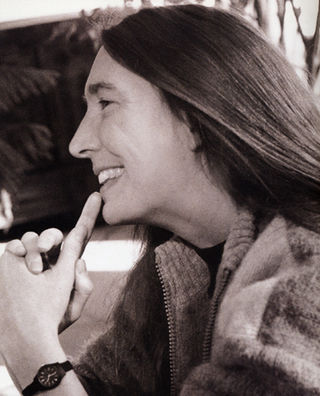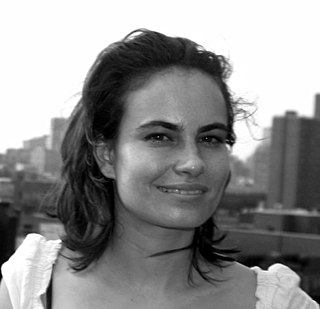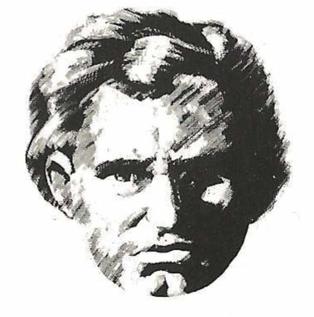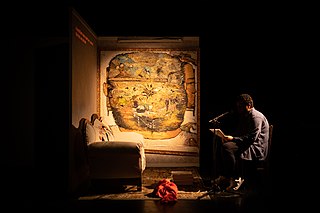Related Research Articles
The New York School was an informal group of American poets, painters, dancers, and musicians active in the 1950s and 1960s in New York City. They often drew inspiration from surrealism and the contemporary avant-garde art movements, in particular action painting, abstract expressionism, jazz, improvisational theater, experimental music, and the interaction of friends in the New York City art world's vanguard circle.

Jenny Holzer is an American neo-conceptual artist, based in Hoosick, New York. The main focus of her work is the delivery of words and ideas in public spaces and includes large-scale installations, advertising billboards, projections on buildings and other structures, and illuminated electronic displays.

George Noel Gittoes, is an Australian artist, film producer, director and writer. In 1970, he was a founder of the Yellow House Artist Collective in Sydney. After the Yellow House finished, he established himself in Bundeena and since then has produced a large and varied output of drawings, paintings, films, and writings. Gittoes’ work has consistently expressed his social, political and humanitarian concern at the effects of injustice and conflict. Until the mid-1980s, this work was chiefly done in Australia. But in 1986 he travelled to Nicaragua, and since then the focus of Gittoes’ work has been largely international. He has travelled to and worked in many regions of conflict, including the Philippines, Somalia, Cambodia, Rwanda, Bosnia, Bougainville, and South Africa. In recent years his work has especially centred on the Middle East, with repeated visits to Israel and Palestine, Iraq, and Afghanistan. In 2011, he established a new Yellow House, a multidisciplinary arts centre in Jalalabad, Afghanistan. Among many prizes, Gittoes has twice been awarded the Blake Prize for Religious Art.

The Museum of Biblical Art (MOBIA) was a Museum in New York; it closed in 2015.
Faeq Hassan (1914–1992) was an Iraqi painter noted for founding several 20th century art groups, which collectively were responsible for bridging the gap between Iraqi heritage and traditional art and modern art. He is often called the 'father of Iraqi modern art.'

Inka Essenhigh is an American painter based in New York City. Throughout her career, Essenhigh has had solo exhibitions at galleries such as Deitch Projects, Mary Boone Gallery, 303 Gallery, Stefan Stux Gallery, and Jacob Lewis Gallery in New York, Tomio Koyama Gallery in Tokyo, and Il Capricorno in Venice.

Thomas Edwin "Tom" Ricks is an American journalist and author who specializes in the military and national security issues. He is a two-time winner of the Pulitzer Prize for National Reporting as part of teams from the Wall Street Journal (2000) and Washington Post (2002). He has reported on military activities in Somalia, Haiti, Korea, Bosnia, Kosovo, Macedonia, Kuwait, Turkey, Afghanistan, and Iraq. He previously wrote a blog for Foreign Policy and is a member of the Center for a New American Security, a defense policy think tank.
Ahmed Al Safi is an Iraqi sculptor and painter.

The Kalamazoo Institute of Arts (KIA) is a non-profit art museum and school in downtown Kalamazoo, Michigan, United States.
Exit Art was a non-profit cultural center that ran from 1982 to 2012 that exhibited contemporary visual art, installation, video, theater, and performance in New York City, United States. In its last location in Hell's Kitchen, Manhattan, it was a two-story gallery.

Ghassan Muhsen is an Iraqi career diplomat, as well as an artist with over 18 solo exhibitions and over 30 joint shows in four continents ranging from New Delhi to New York, from Dubai to Tunis. Currently Ambassador Ghassan Muhsen serves as Ambassador to the Kingdom of Bahrain. His work usually incorporates three basic elements "Floral, architectural motifs, and traditional calligraphy" His paintings are "a result of a fusion between the three" His work has been exhibited extensively throughout Europe and the Middle East.
Vian Sora is an Iraqi American artist.

Shakir Hassan Al Said (1925–2004), an Iraqi painter, sculptor and writer, is considered one of Iraq's most innovative and influential artists. An artist, philosopher, art critic and art historian, he was actively involved in the formation of two important art groups that influenced the direction of post-colonial art in Iraq. He, and the art groups in which he was involved, shaped the modern Iraqi art movement and bridged the gap between modernity and heritage. His theories charted a new Arabic art aesthetic which allowed for valuations of regional art through lenses that were uniquely Arabic rather than Western.

Girls' Club Foundation is a privately funded non-profit foundation providing an art gallery and exhibition space in the center of Fort Lauderdale, Florida. Contemporary art works in painting, drawing, photography and video are presented in curated, thematic exhibitions, including works loaned from other collectors, galleries and artists.

Gustav Rehberger (1910–1995) was an Austrian-born American painter, draftsman, illustrator, designer, muralist, and art educator.

Iraqi art is one of the richest art heritages in world and refers to all works of visual art originating from the geographical region of what is present day Iraq since ancient Mesopotamian periods. For centuries, the capital, Baghdad was the Medieval centre of the literary and artistic Arab world during the Abbasid Caliphate, in which Baghdad was the capital, but its artistic traditions suffered at the hands of the Mongol invaders in the 13th century. During other periods it has flourished, such as during the reign of Pir Budaq, or under Ottoman rule in the 16th century when Baghdad was known for its Ottoman miniature painting. In the 20th century, an art revival, which combined both tradition and modern techniques, produced many notable poets, painters and sculptors who contributed to the inventory of public artworks, especially in Baghdad. These artists are highly regarded in the Middle East, and some have earned international recognition. The Iraqi modern art movement had a profound influence on pan-Arab art generally.
Rafa al-Nasiri was an Iraqi painter, draughtsman, print-maker, educator and author whose works with a social and political message resonated with the Iraqi public in the mid-20th century. He was also very influential in encouraging young artists to take up print-making.
Faraj Abbo al Numan, more commonly Faraj Abu, Faraj Aboo or simply Faraj Abou, was an influential Assyrian Iraqi artist, theatre director, designer, author and educator, noted as one of the early artists to integrate Arabic script into his abstract paintings and who achieved international recognition for his artwork.
Nadir Abdurrahmanov was a painter, Honored Art Worker and People's Artist of the Azerbaijan SSR.

Ali Eyal, Is an Iraqi visual artist and he's currently based in Los Angeles who works internationally. His work explores the complex relationships between personal history, transitory memories, politics & identity using different media, primarily based in the medium of painting, and further transformed through other media - such as installations art, photography, text and video.
References
- 1 2 "Steve Mumford - Glasschord". glasschord.com.
- ↑ Kino, Carol. "Sketches From the Front: An Artist's Dispatches, Rendered in Ink and Paint", New York Times, December 13, 2004.
- ↑ Gregg, G. "Nothing Like the Real Thing", ARTnews, December 2010, pp. 68–71.
- ↑ "Steve Mumford".
- ↑ "Steve Mumford: Baghdad Journal: An Artist in Occupied Iraq", Pritzker Military Museum & Library, April 27, 2007.
- 1 2 Justin Jones, "Steve Mumford: The Artist Who Went to War", The Daily Beast, February 28, 2014.
- ↑ McKelvey, Tara (Nov 11, 2013). "Preserved as evidence, Camp X-Ray holds dark memories". BBC News.